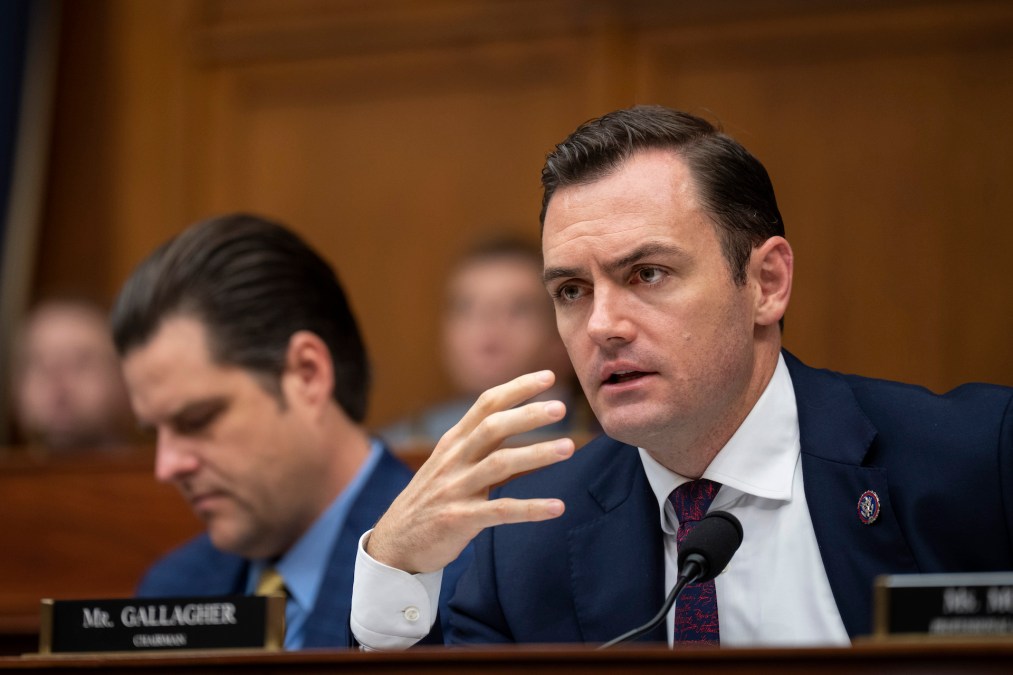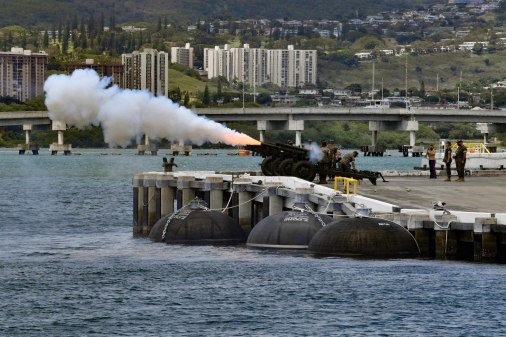In wake of Project Maven, Pentagon urged to launch new ‘pathfinder’ initiatives to accelerate AI

Congress should incentivize and invest in each military branch establishing a new “pathfinder project” or grand challenge-like program to accelerate artificial intelligence deployments unique to their specific needs, House lawmakers were told during a hearing on Tuesday. And at least one leading member is keen to help make that happen, DefenseScoop confirmed.
At a House Armed Services subcommittee hearing on the present barriers preventing the Defense Department from adopting AI as quickly as China, expert witnesses pointed to multiple major challenges that the U.S. government will not be able to solve overnight.
For example, they warned that China is spending roughly 10 times more of its military budget on AI compared to the U.S. and making deliberate moves to rapidly disrupt combat platforms with the emerging technology. The DOD generates more than 22 terabytes of data daily but is not AI-ready enough to make the best use of it.
Those issues have no “quick fix.” But in his testimony, Scale AI CEO Alexandr Wang said one almost immediate actionable solution associated with the Pentagon and AI would be for Congress to push “each branch of the military to formally identify its next Pathfinder Project and adequately fund it to be successful.”
“To date, the largest AI Pathfinder Project within DOD is still Project Maven, which began in 2017,” Wang said.
Formed under the purview of the Office of the Undersecretary of Defense for Intelligence and Security (I&S), Project Maven marked DOD’s major computer vision initiative, which was originally designed to apply machine learning to autonomously detect and track objects or humans of interest via imagery captured by surveillance aircraft, satellites and other military assets. Now matured and known simply as “Maven,” the effort and aligned responsibilities were recently split across the National Geospatial-Intelligence Agency, the DOD’s nascent Chief Digital and Artificial Intelligence Office (CDAO), and I&S.
“There are endless DOD use cases that would benefit from being identified as a Pathfinder Project. For example, the Army is making progress on Project Linchpin and their ground autonomy work; Joint All Domain Command and Control (JADC2) requires DOD buy-in at all levels to succeed; and the Navy has discussed a concept called Project Overmatch, which would create a whole-of-Navy approach to AI adoption,” Wang explained in his testimony.
In a press gaggle after the hearing, the subcommittee chair Rep. Mike Gallagher, R-Wis., told DefenseScoop that Wang’s pathfinder suggestion “seems like something [Congress members] could solve — and just push DOD to move faster on that.”
“One thing I’m personally obsessed with … is if you look at, by certain estimates, the appropriation process of the last five years — we have appropriated but not spent $25 billion every year and it goes into abeyance in the Treasury for five years, and then it just goes back to the Treasury, and then it’s used for purposes other than defense,” Gallagher said.
“So one thing I’m persuaded is that we could take some subset of that money — already appropriated, doesn’t count against the topline — and use it for specific purposes that would range from replenishing all our stockpiles of key munitions that we’ve learned from Ukraine are absolutely essential to deterring a war with China or Taiwan, to funding this grand challenge idea that Mr. Wang has laid out,” the lawmaker told DefenseScoop.






